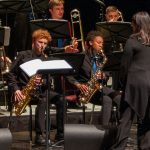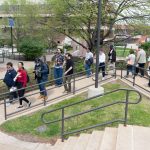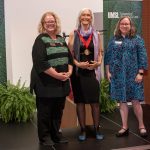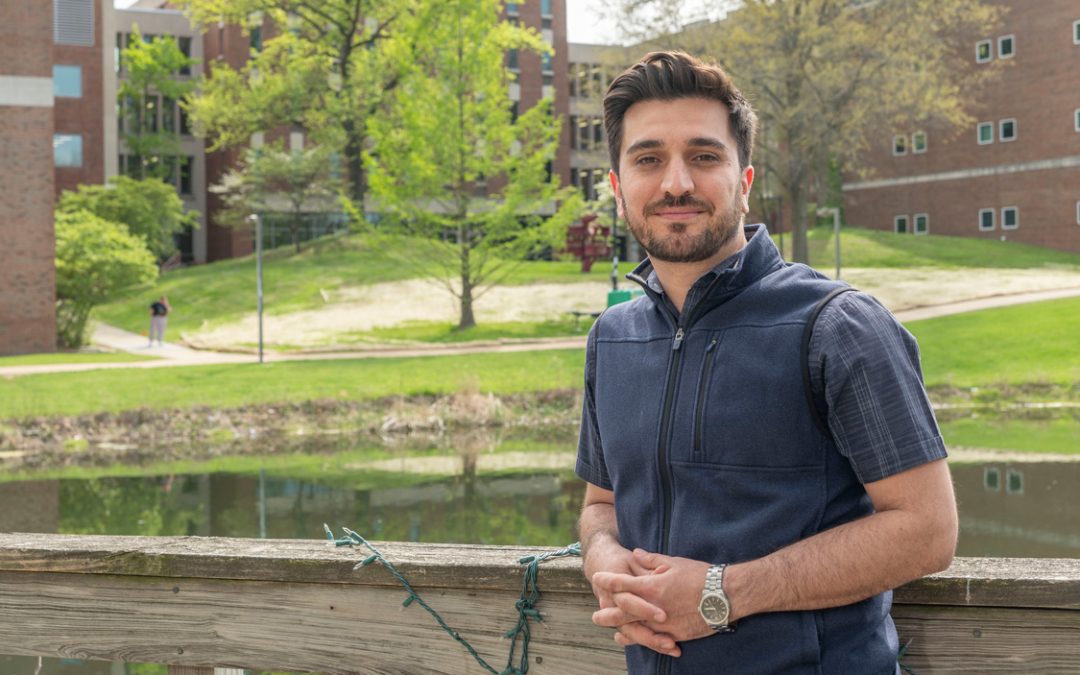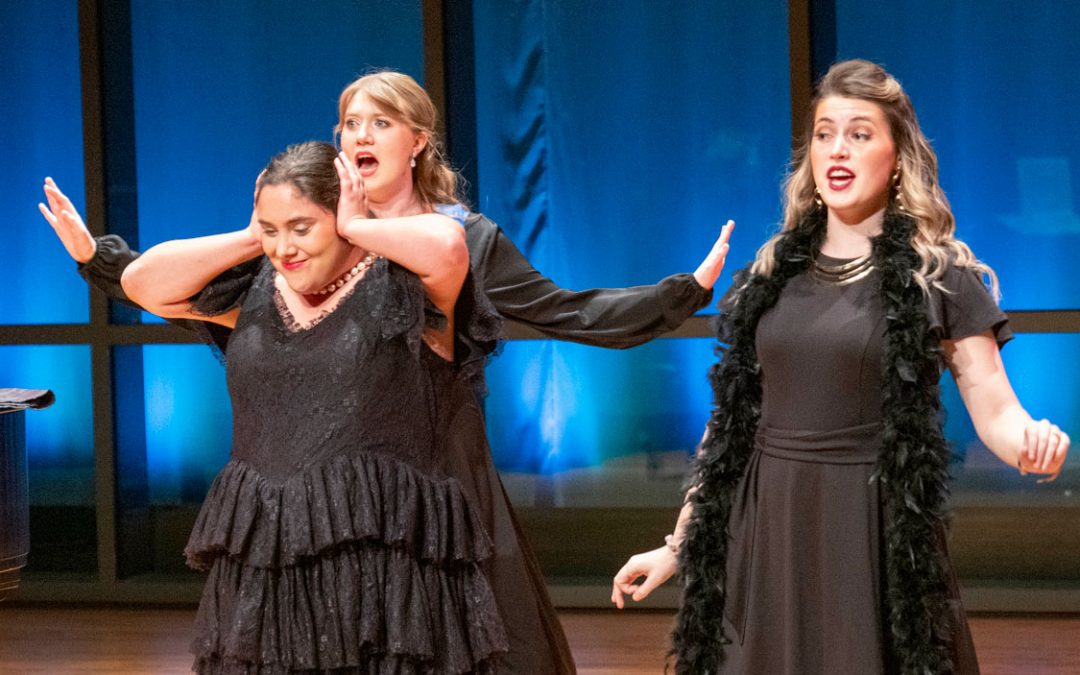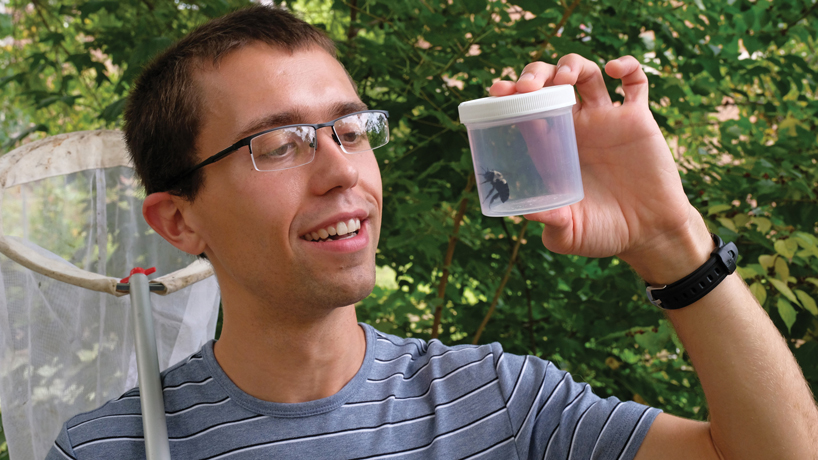
Doctoral student Matt Austin observes one of the bumblebees he’s studying as he tries to discover why some species are declining while others are not. (Photo by August Jennewein)
Matt Austin’s search for clues has carried him from the Dunlap Cognitive Ecology Lab at the University of Missouri–St. Louis into the fields at Shaw Nature Reserve and even to some of the nation’s leading natural history collections.
The puzzle the third-year doctoral student is trying to solve is why some species of bumblebees are in increasing danger of dying off at a time when others are thriving.
Everyone, ultimately, has a stake in learning the answer.
“Bumblebees are not only major pollinators of a lot of agricultural crops, but also our wildflowers in North America,” Austin says. “In addition to promoting global food security, they maintain the integrity of our native ecosystems.”
The decline in bumblebees has been linked to human-induced environmental changes such as the loss of habitat, climate change and the spread of pathogens, pesticides and invasive species, but not all 250 of the world’s bumblebee species are responding to these changes in the same way.
Austin’s work is focused on the seven species that can be found natively in the St. Louis area. Four of them – Bombus fraternus, Bombus fervidus, Bombus pensylvanicus and Bombus auricomus – have been declining while the others – Bombus impatiens, Bombus griseocollis and Bombus bimaculatus – are stable or even increasing.
“It likely indicates that there are species-specific traits that determine their response to human-induced environmental changes,” Austin says. “I’m trying to uncover those.”
Right now, the only species about which much is known is Bombus impatiens, the most commonly studied bumblebee in the eastern half of North America.
Austin is hoping to gain insights about the others by observing their behavior.
He’s also attempting to glean more by studying pinned collections at the Illinois Natural History Survey in Champaign, The Field Museum in Chicago and the Smithsonian Institute in Washington. He’s measured phenotypic traits such as body size and head width to see if there is a link that could explain the population trends.
“I like that he has an enthusiasm for combining pretty hardcore science with these conservation questions,” says Aimee Dunlap, an assistant professor of biology at UMSL.
Austin, a Kirkwood, Missouri, native, worked with Professor Carl Gerhardt, researching gray tree frogs and their communication, while earning his undergraduate degree in biology at the University of Missouri–Columbia in 2014.
His work with bumblebees has earned him recognition in the form of the Mickey Scudder Scholarship in Field Biology from the Webster Groves Nature Study Society, which helped fund his research last summer, and the TWA Scholarship from the University of Missouri System. He has also received a research grant funded by Terracon and the Terracon Foundation and awarded through the Whitney R. Harris World Ecology Center at UMSL.
Austin expects bumblebees to remain his focus, not only for the dissertation he’ll soon begin plotting but also the career of teaching and research he plans to launch after completing his degree.
This story was originally published in the fall 2017 issue of UMSL Magazine. Have a story idea for UMSL Magazine? Email magazine@umsl.edu.






